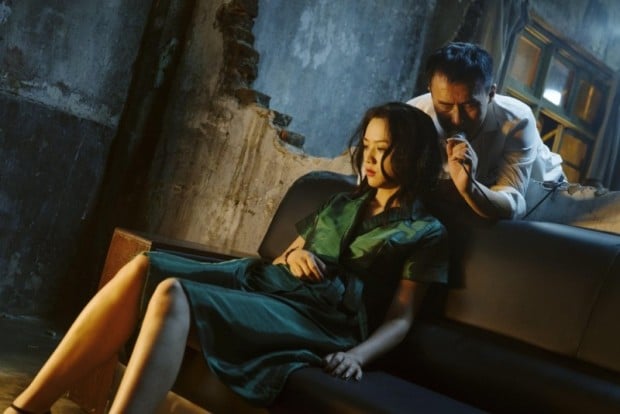‘Long Day’s Journey Into Night’ takes noir to new heights
Up-and-coming Chinese filmmaker Bi Gan exploded onto the international film scene in 2015 with his soulful and poetic debut feature “Kaili Blues.” The film made waves with its world premiere at the Locarno International Film Festival, where it won Best First Feature, and Gan went on to win the special prize of Best Emerging Filmmaker. While not a breakout hit of any sorts in the States, Gan solidified a decent enough following to warrant him to come back swinging for the fences with the ambitious and awe-inspiring follow-up “Long Day’s Journey Into Night.”
Similarly to “Kaili Blues,” “Long Day’s Journey Into Night” proved to be a wildly successful film at the international festival circuits. It held its world premiere at the 71st Cannes Film Festival last year, where it received universal praise for its clearly inspired plot beats and stylistic expressions —including a subtle yet breathtaking 59-minute-long tracking shot in 3D.
However, the film didn’t necessarily gain a status in the world until it premiered on New Year’s Eve 2018 in China. Before its release, the film’s distributor marketed the film as a grand romantic epic that will prove to be the perfect way for film fans and lovers to end the year with. The thing is is that “Long Day’s Journey Into Night” is not a commercial romantic epic; it’s a melancholic surrealist art film noir. Once people discovered this fact in the theater, they flooded the film’s page on the Chinese ticket service Maoyan with horrific reviews — and a 2.8 out of 10 score.
In one week the film grossed a staggering $42 million and then it vanished from theaters immediately. It’s a sly trick for the distributor to play on their audience, but luckily it gave the film enough agency for it to play in the States courtesy of specialty distributor Kino Lorber in its proper 3D big screen format. Unlike “Kaili Blues,” this has gained traction with a domestic box office cume of over a quarter of a million dollars in less than a month, a pretty impressive figure for a niche experimental foreign release.
So now that the film’s journey has carved its path to the Windy City, the only question remains is is it worth going out to see and in this writer’s humble opinion, it definitely is.
The story of “Long Day’s Journey Into Night” is a tad hard to pin down in a straightforward review, but its pure essence can be easily summed up as “Double Indemnity” by way of Wong Kar-Wai and Andrei Tarkovsky. It’s a subtle, slightly abstract and deeply thoughtful meditation on the connection between past traumas and emotional artistic projections. The entire narrative is built around sly clues about our protagonist’s life that are dropped throughout the film, making it even more rewarding upon rewatch.
The film’s reception by Chinese audiences is not all that surprising. Gan has made a film that requires a very peculiar wavelength and sense of patience to tap into. But one thing that really cannot be refuted is Gan’s insane mastery over his craft. Not a single person in the world has written about this film without gushing over the second half that is made up entirely of a 3D tracking shot paired with an stunning Dolby Atmos soundscape. It’s a breathtaking and arresting feat that I still find myself in shock thinking about.
Much like Tarkovsky, Gan finds the beauty and reward in the patience of storytelling. There’s a seductive magnetism to it that seeps its way into the psyche of the viewer long after the credits have rolled. It’s very meta in a sense. Gan makes the point that while our romanticism of nostalgia and the past is wholly irretrievable, it will forever remain unshakable deep within us.
There’s a strong possibility that “Long Day’s Journey Into Night” might not be a film for you, but on the off chance it is, I believe it is worth taking the deep-dive into the sheer audacity of Bi Gan’s vision. It’s a singular and purley theatrical experience that will not be replicated in its bizarre cultural impact and cinematic achievement.















